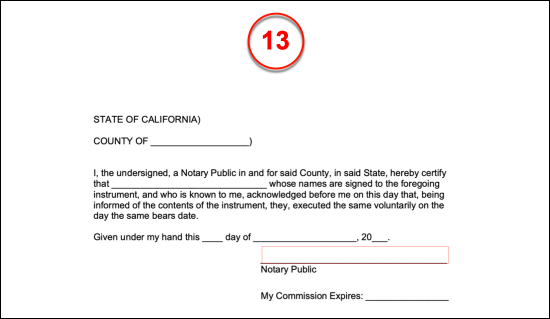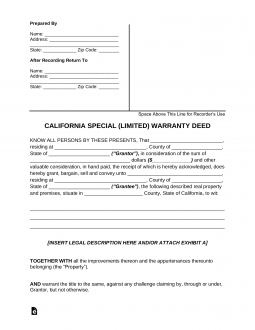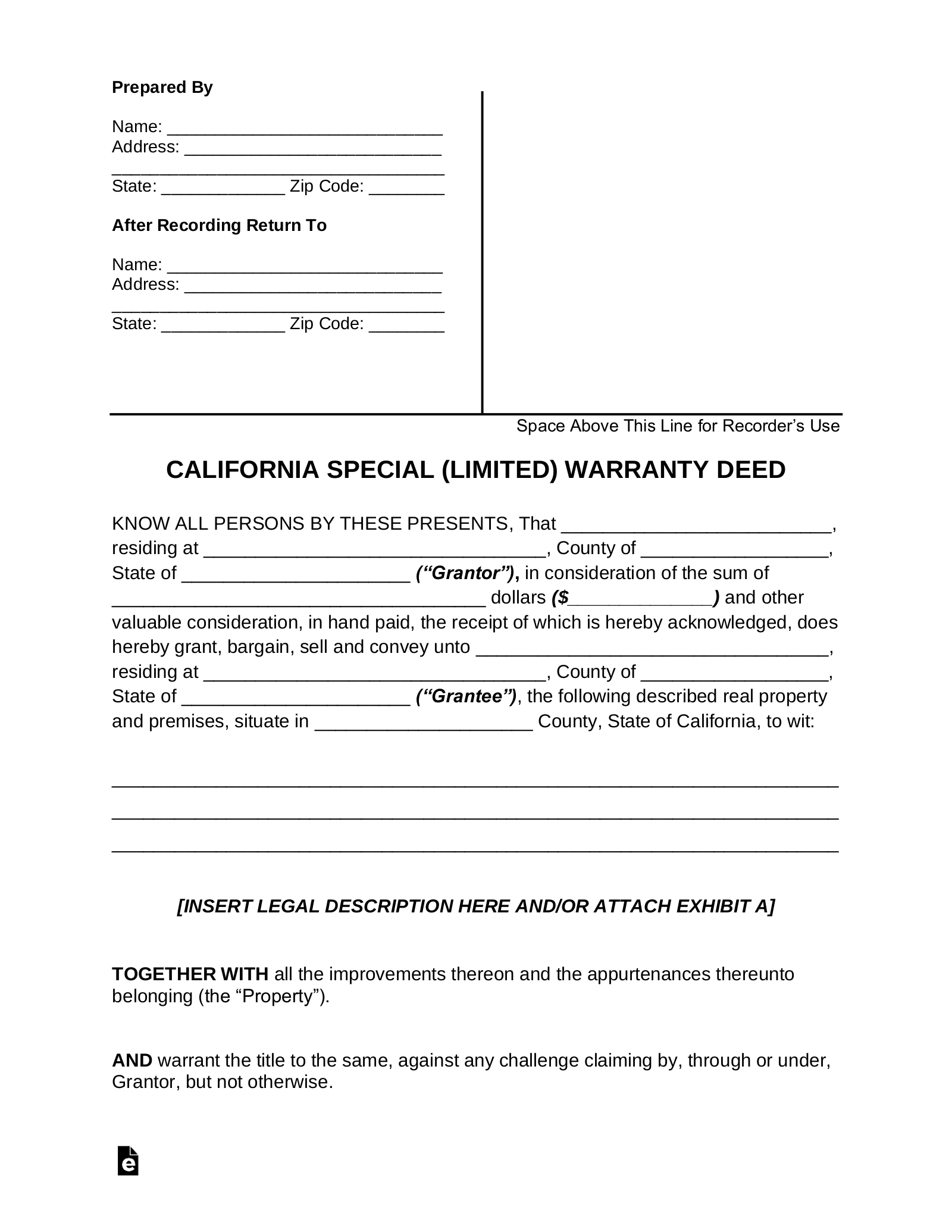Updated September 19, 2023
A California special warranty deed allows the title to real property to be transferred with guarantees against claims and liens while the grantor owned the property. The buyer (grantee) will have to conduct a title search to discover any outstanding claims before the grantor’s ownership.
Laws – Civil Code, Title 4 – Transfer (§§ 1039 — 1231)
Preliminary Change of Ownership (Form BOE-502-A) – Required to be filed with the deed.[1]
Recording – Must be filed with the Recorder located in the jurisdiction of the property.[2]
Signing – This form must be signed in the presence of a Notary Public with the All-Purpose Acknowledgment.[3]
Tax Assessor’s Parcel ID – The property’s Parcel ID Number must be entered into the legal description of the deed.[4]
How to Write
I. Document Preparation
(1) California Preparer Name And Address. This paperwork’s Preparer requires identification at the beginning of the header. Supply the full name and complete mailing address or business address of the Party recording information onto this document before it is executed.

II. Recording Recipient
(2) California Recipient Of Filed Deed. The California County Recorder requires a reliable destination for this document once it has been filed properly with the State. Supply the name and the entire mailing address of the desired Recipient. Keep in mind this Recipient will receive the finalized document as recorded with the California County where it was filed.
(3) Mailing address. The mailing address where the Grantor of the California property wishes this document to be returned once it has been recorded with the appropriate County should be presented with the identity of the Recipient above. Make sure this address is reported accurately and well-monitored by the intended Recipient.

III. Grantor Statement On California Property
(4) Name Of California Grantor. The current Owner of the property located in the State of California will need to sign this release of ownership to put it in effect. Before doing so, however, he or she must be attached to this role. Every Party who must release ownership of the California property by signing this document must have his or her full name presented at the beginning of the declaration statement it makes. If there is not enough room, then additional space may be inserted into the statement or an attachment with this roster of California Grantors can be composed, properly titled, and attached.

(5) Complete Address Of California Grantor. The Grantor of California real property must also have his or her street address, County, and State of residence included in this statement. Furnish these items to the three available spaces reserved for this information.

IV. Grantee Payment
(6) Dollar Amount Required By Grantor. The payment that the California Grantor(s) of property received in exchange for the execution of this document and the release of ownership it represents must be reported. Thus, record the full dollar amount the California Grantor was paid to release his or her ownership of real property. If there are more than one Grantors who have received separate sums then furnish the total amount paid or develop a separate document for each one with the amount each has received. This amount should be presented in its written form then, within the parentheses, its numerical form.

V. California Grantee Identity
(7) Name Of California Grantee. Document the legal name of the Grantee who shall seize the same level of ownership over the California property that the previously named Grantor(s) will relinquish through this document.(8) Full Address Of California Grantee. The home address of the California Grantee should be produced with a recording of the street address, county, then state of the Grantee’s residence. Notice that three distinct areas to receive this information have been set aside in this statement for presentation.

VI. California Property
(9) Concerned California Property. It is crucial that no question remain when identifying the California property the Grantor releases using this paperwork. Therefore, deliver the name of the California County where it is located to open this discussion.
(10) Legal Description Requirement. Continue identifying the California property by documenting its physical address, its Parcel ID Number, and its legal description. A significant area has been provided for this task however if more room will be needed the Preparer may insert additional lines or provide the title of the attachment containing these items.
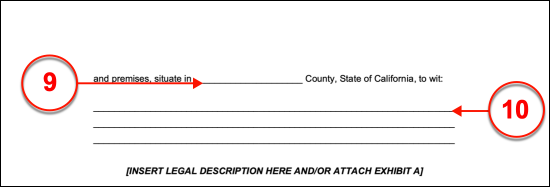
V. California Grantor’s Notarized Execution
(11) Signature Of California Grantor. The California Property Owners must produce a notarized signature to this paperwork before it can be submitted to the County Recorder. Each California Grantor that was named in the initial statement above must sign his or her name under the instruction of a licensed Notary Public.
(12) California Grantor’s Name And Address. Each Grantor must reaffirm his or her identity when signing with a production of his or her printed name and complete address.
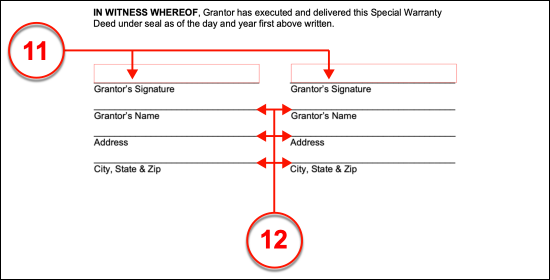
VI. Notary Public Action
(13) Required Notarization. As mentioned, the State of California shall require that the identification of the Signature Grantor is authenticated in a reliable fashion. An area, reserved for the required notary action, will allow verification of the date of signature, the identity of the Signers, and the location of the signature process. The Notary Public will also include his or her own credentials and seal to this document as part of the notarization process.
